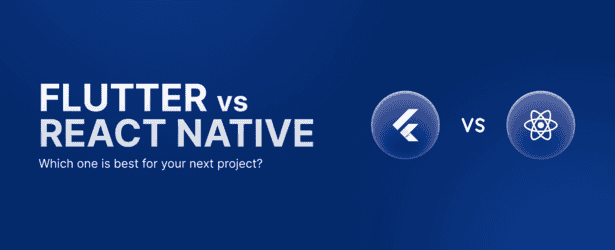Top Flutter Tools and Plugins Developers Must Use in 2025
16 Apr 25 


Flutter continues to establish itself as a leading cross-platform development framework in 2025, maintaining its position through continuous innovation and a robust ecosystem of tools and plugins. As applications become increasingly complex and user expectations rise, developers need reliable resources to maintain productivity, code quality, and competitive advantage. This comprehensive overview highlights the most impactful Flutter tools and plugins that development teams should consider incorporating into their workflows this year.
Development Environment Enhancements
The foundation of efficient Flutter development remains a well-optimized IDE setup. In 2025, VS Code and Android Studio continue to dominate as primary development environments, but their capabilities have expanded significantly through specialized extensions.
Flutter DevTools has evolved considerably from its earlier versions, now offering comprehensive performance profiling that identifies rendering bottlenecks with remarkable precision. The memory allocation visualization features help developers identify potential leaks before they impact user experience, while the enhanced network profiling capabilities provide granular insights into API interactions. Teams implementing complex applications with substantial data requirements find these improvements particularly valuable for maintaining application responsiveness.
For those managing larger codebases, the Code Assist plugin has become indispensable with its advanced refactoring capabilities. When teams need to restructure components or transition between state management approaches, this tool significantly reduces the manual effort required. The context-aware suggestions have improved remarkably in accuracy, making them genuinely useful rather than merely interesting.
How efficiently does your team navigate between code files in large projects? The newly refined Flutter Outline+ extension addresses this pain point by providing structural navigation that understands widget hierarchies rather than just file structures. Development teams report significant time savings when troubleshooting complex UI issues, as the tool enables quick movement between related widget implementations regardless of their file location.
Also read The 5 Must-Have Flutter App Development Ideas You Should Understand
State Management Solutions
State management approaches continue to evolve within the Flutter ecosystem, with several frameworks emerging as clear leaders based on their stability and developer experience.
Riverpod has maintained its momentum, now offering even tighter integration with code generation tools. The provider pattern remains conceptually sound, but Riverpod’s enhanced compile-time safety checks and debugging tools reduce common errors related to state updates. Enterprise teams particularly appreciate the improved testing utilities that enable more precise unit testing of state-dependent components.
For applications with complex domain models, Bloc patterns implemented through the bloc_concurrency package have proven especially valuable. The structured approach to state transitions provides clarity in complex applications where multiple processes might affect the same state. Senior developers appreciate how the pattern facilitates consistent implementation across team members with varying experience levels.
While these structured approaches offer significant benefits for larger applications, GetX continues to provide a more accessible entry point for smaller teams or projects. Its pragmatic approach to state management and navigation requires less boilerplate while still maintaining reasonable separation of concerns. The package has matured significantly, addressing earlier concerns about performance in complex scenarios.
Has your team established consistent patterns for handling application state? The investment in standardizing these approaches pays considerable dividends as applications grow in complexity and team size.
UI Component Libraries
Creating polished, consistent user interfaces efficiently remains a priority for development teams. Several component libraries have emerged as particularly valuable for accelerating UI development while maintaining quality.
Material Components Extended builds upon Google’s Material Design implementation with additional widgets that address common enterprise requirements. The data table components have become particularly sophisticated, offering built-in sorting, filtering, and pagination capabilities that previously required custom implementation. For applications that handle substantial data presentation, these components dramatically reduce development time.
For teams seeking to implement distinctive brand identities, the Fluent UI package offers a comprehensive implementation of Microsoft’s design language. As more enterprises standardize on consistent experiences across platforms, this library enables Flutter applications to maintain visual coherence with other corporate applications.
The newly established DartUI library represents an interesting development, providing adaptive components that automatically implement platform-specific behaviors while maintaining a consistent API. This approach reduces the cognitive load on developers while still respecting platform conventions, an increasingly important consideration as Flutter applications expand beyond mobile to desktop and web environments.
Beyond these comprehensive libraries, specialized packages like fl_chart have continued to evolve, now offering impressive performance even when rendering complex visualizations with large datasets. The declarative API allows developers to create sophisticated charts with minimal code while retaining customization capabilities when needed.
Backend Integration and API Tools
Connecting Flutter applications to backend services remains a core requirement, and several tools have emerged to streamline this process.
Retrofit for Dart, inspired by its Android counterpart, has gained significant adoption for its ability to generate type-safe API clients from annotated abstractions. When combined with JSON serialization packages like json_serializable, it creates a robust pipeline from API definition to strongly-typed Dart models. Development teams report fewer runtime errors related to API integration and improved maintainability of service interfaces.
For applications requiring real-time capabilities, the supabase_flutter package has matured into a compelling option. The combination of database access, authentication, and real-time subscriptions addresses many common requirements. Enterprise teams appreciate the reduced dependency complexity compared to implementing these features through separate packages.
GraphQL continues to gain traction for complex data requirements, with the graphql_flutter package now offering improved caching strategies and offline support. The normalized cache implementation handles complex object relationships more effectively than previous versions, addressing one of the historical pain points of GraphQL implementation in Flutter.
What percentage of your development time goes into API integration and data handling? For many teams, these tasks represent a substantial portion of the development effort, making investment in optimized tooling particularly valuable.
Testing and Quality Assurance
As Flutter applications become mission-critical for many organizations, comprehensive testing frameworks have become essential components of the development workflow.
The integration of Flutter Driver with Firebase Test Lab has significantly improved the ability to run automated UI tests across multiple device configurations. The enhanced reporting capabilities help teams identify device-specific issues before they reach production, reducing support costs and improving user satisfaction.
For unit and widget testing, the mocktail package has largely replaced mockito as the preferred mocking solution. Its null-safety compliance and simplified syntax make tests more readable and maintainable. Teams consistently report that well-structured tests using mocktail serve as valuable documentation for component behavior.
Golden tests continue to provide value for UI regression testing, with the alchemist package extending these capabilities to handle responsive layouts more effectively. The ability to test components across multiple screen sizes with a single test definition helps ensure consistent experiences across devices.
You may also explore How to Implement Debugging Quickly in Flutter?
Performance Optimization and Monitoring
As user expectations for application performance continue to rise, several tools have become essential for maintaining competitive experiences.
The performance_analyzer plugin provides real-time insights into rendering performance, helping developers identify and address issues during development rather than retroactively. The visualization of frame rendering times has proven particularly valuable for optimizing animation-heavy interfaces.
For production monitoring, Firebase Performance Monitoring has expanded its Flutter-specific metrics, now offering insights into startup time segmented by device capability. This data helps teams prioritize optimization efforts based on actual user impact rather than theoretical concerns.
Final Thoughts
The Flutter ecosystem continues to mature, with tools and plugins addressing the full spectrum of development requirements. From fundamental IDE enhancements to specialized UI components and comprehensive testing frameworks, these resources enable development teams to create sophisticated applications efficiently.
The most successful Flutter projects in 2025 utilise these tools strategically, selecting combinations that address their specific requirements while maintaining reasonable dependency management. As you evaluate your development workflow, consider how these established tools might enhance your team’s productivity and code quality.
The investment in proper tooling extends beyond immediate productivity gains—it establishes patterns and practices that support sustainable development as applications evolve. In the competitive landscape of mobile and multi-platform development, this foundation provides a meaningful advantage for teams committed to delivering exceptional software experiences.
- Agentic AI1
- Android Development3
- Artificial Intelligence31
- Classified App3
- Custom App Development5
- Digital Transformation12
- Doctor Appointment Booking App14
- Dropshipping1
- Ecommerce Apps40
- Education Apps2
- Fintech-Apps37
- Fitness App4
- Flutter4
- Flutter Apps20
- Food Delivery App5
- Grocery App Development1
- Grocery Apps3
- Health Care10
- IoT2
- Loyalty Programs9
- Matrimony Apps1
- Microsoft1
- Mobile App Maintenance2
- Mobile Apps127
- Product Engineering6
- Progressive Web Apps1
- React Native Apps2
- Saas Application2
- Shopify9
- Software Development3
- Taxi Booking Apps7
- Truck Booking App5
- UI UX Design8
- Uncategorized6
- Web App Development1


















Comments